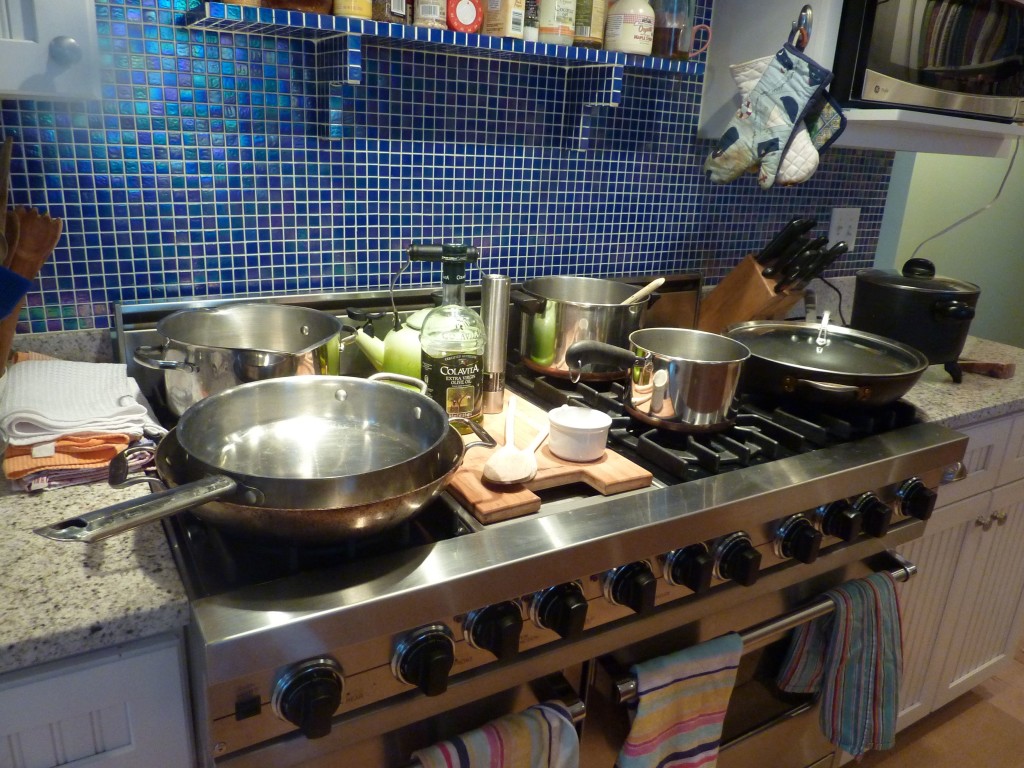7 secrets of eating local and saving time and money

Grocery store food used to be “fancy food.” Now local wears that label. Let’s turn that on its head again. How can local become our daily fare without breaking the bank? If you are doing the 10-Day Local Food Challenge, you have this question.
Follow these 7 steps and you’ll actually save money, It may just be less work as well. Oh, and you might lose weight and get healthier.
- Eat like an animal: seasonally. Buy at peak ripeness. We don’t pay attention to season anymore, but what if we did? Leafy greens and radishes are all season long so we have another way to enjoy those bargains. But where I live it goes something like this: peas, broccoli, summer squash, beans, corn, cukes, melons, cabbage/cauliflower/Brussels sprouts, roots, winter squash. At peak ripeness farmers need to lower their prices to sell their crop. They may – for good customers – even offer seconds at a discount. Which leads to # 2
- Befriend your farmer – at least one. Local food turns into relational eating when you go behind the Farmers Market stand or farm stand. If you buy a CSA share or buy from a fresh sheet, you are committing to someone/s who grow your food. Your share will have bounty and over a season will average to less per pound than out of season store. You may be able to glean after they pick for market. Or do a work trade and get some time in the sun. If you know the local humans behind your local food, a second level of bounty appears.
- Eat like a squirrel: store. When you buy at peak ripeness, you can freeze, dry or can your bounty. I buy a flat of blueberries at peak ripeness, freeze (there’s a trick), and have a year’s worth of smoothies. Same with all berries. Peak tomatoes you can dry in a dehydrator or make a sauce to freeze or can. Now don’t freak out about canning. With tomatoes and berries, you cook to perfection, put in clean hot canning jars with fresh lids (get instructions online) and immerse in a deep pot of boiling water for the right amount of time. Let me tell you, when you take out your jars to cool and hear that reassuring pop of the lids sealing, it’s kitchen orgasmic.
- Grow your own on a sill, deck or plot. I advocate that everyone grow sprouts. You can sprout radish seeds in a jar instead of in the ground. And very nutritious alfalfa pumpkin lentil and buckwheat seeds. Here’s instructions. As for your deck, I participated in a kickstarter for this Growing Tower and have abundant herbs and greens in a 4 foot square area. A T of sprout seeds makes half a gallon of sprouts. All year local crop.
- Share an animal: If you know a farmer who raises meat animals, you may have to go whole hog – or quarter hog. I buy my winter meat by sharing a quarter of a steer raised locally on grass with several friends. The quality or nutrition is far far better than even organic grocery store meat, and the cost is about equal. We share a freezer kept in one friend’s garage who loves having most of the space for dog bones (for her dogs, silly).
- Cook for the week. Depending on local ingredients and your dietary preferences, you can make soup out of anything, and especially out of veggies that might in half a day be relegated to the compost. A big pot of soup, divided into portions, some of it frozen, some of it in jars in the fridge, is the basis for many meals. If you have local grain, make a enough for the week in a rice cooker which takes just a few minutes. You can also make casseroles to “eat on” as my Midwest friends say. You can use local potatoes or grains as the base – or even zucchini as i did in my award-winning Zucchini Lasagna recipe.
- Eat less. Waste less. If you pay attention as you eat locally grown food, you may find, as I have, that you are full on less quantity. I’ve learned that bodies seek nutrition from food. Duh-uh. Less nutrition, the body says “more.” Highly nutritious (think fertile soils, grass-fed animals, etc), the body says, “Enough.”

No comments